#pitcher plants
Text
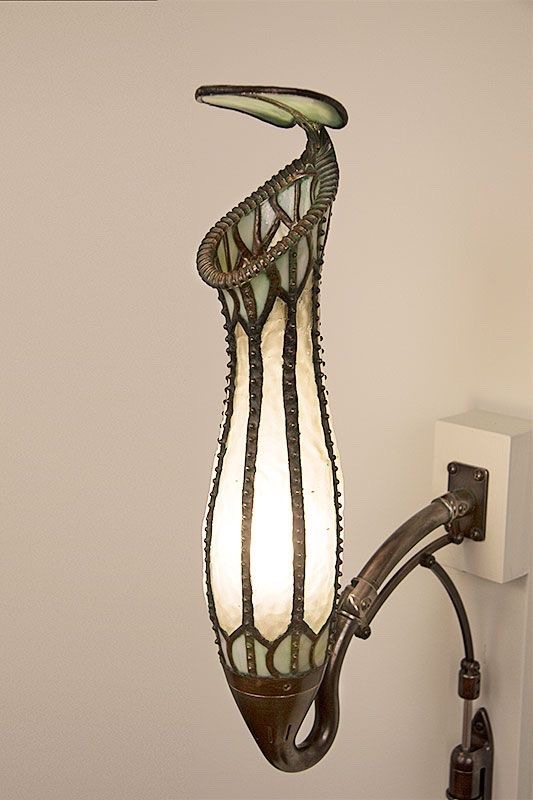
Pitcher Plant Lamp
20K notes
·
View notes
Text
Pitcheresque 💛
Almost just went home after work today. I would have missed this.
There's a little patch of pitcher plants in a marshy area of my home away from home, and they're blooming now.

539 notes
·
View notes
Text
This is made of glass
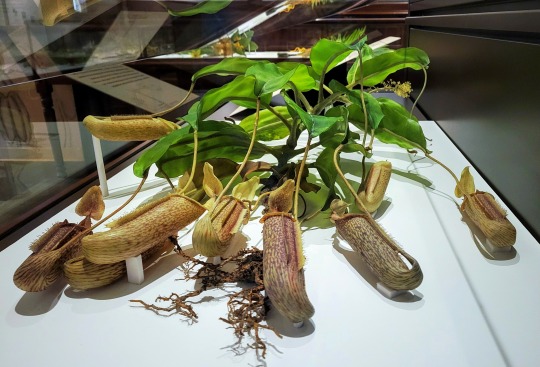

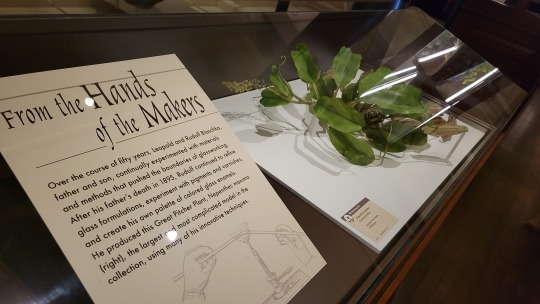
Blaschka Glass Models of Plants exhibit at the Harvard Museum of Natural History
IDs under the cut
From top to bottom, left to right:
[ID 1:
A photo of a large pitcher plant sculpture sitting in a case of glass and dark wood on a white background in a museum exhibit. The plant is photographed from below, so the plant's roots and bottom of the purple and yellow pitchers are in the foreground. The stems, leaves, and flowers are seen from below.
/end ID 1]
[ID 2:
A close-up photo of the leaves and pitchers, taken from above the pitchers.
/end ID 2]
[ID 3:
There are two signs to the left of the sculpture of the pitcher plant. The first and larger sign reads:
From the Hands of the Makers
Over the course of fifty years, Leopold and Rudolf Blaschka, father and son, continually experimented with materials and methods that pushed the boundaries of glassworking. After his father's death in 1895, Rudolf continued to refine glass formulations, experiment with pigments and varnishes, and create his own palette of colored glass enamels. He produced this Great Pitcher Plant, Nepenthes maxima (right), the largest and most complicated model in the collection, using many of his innovative techniques.
The smaller plaque identifies the artwork and reads:
Nepenthes maxima (Great Pitcher Plant)
Indonesia, New Guinea & Philippines
by Rudolf Blauschka, 1906
/end ID 3]
#how is this glass. how.#glass flowers#rudolf blauschka#art#glass art#nepenthes maxima#pitcher plants#carnivorous plants#harvard museum of natural history#cambridge ma#my photos#botany
788 notes
·
View notes
Text
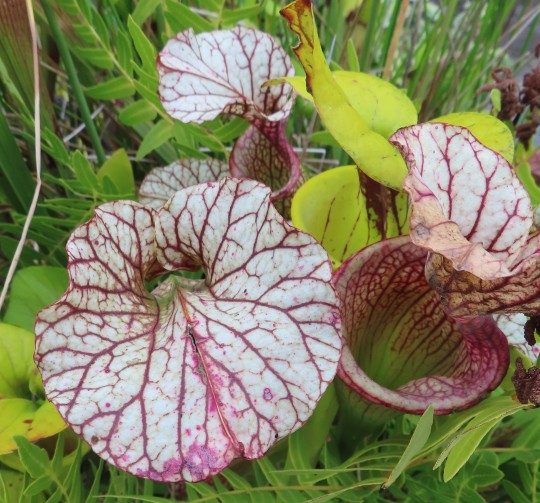
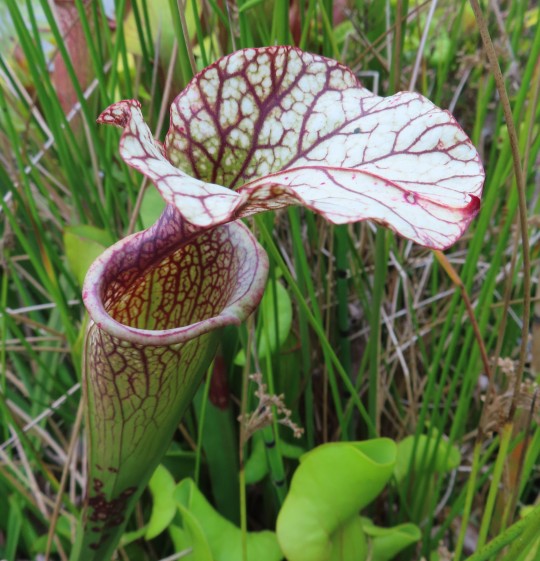
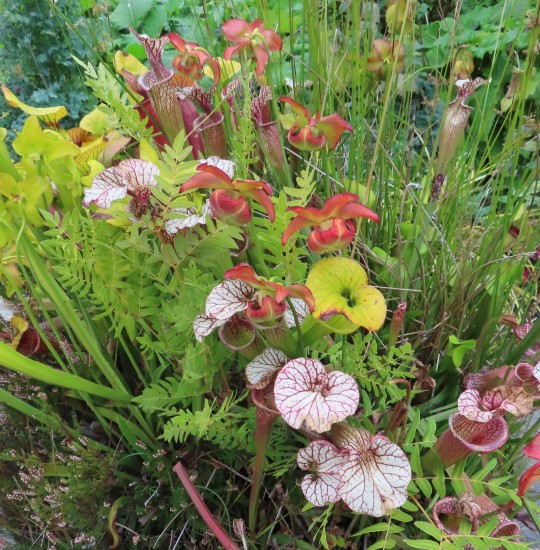
Sarracenia (pitcher plants)
"Come into my parlor." said the spider to the fly. I must admit, I find carnivorous pitcher plants a bit creepy. Somehow the thought of plants that eat animals for a living seems to upend the natural order of things. Let's not encourage this tendency.
#flowers#photographers on tumblr#pitcher plants#creepy#carnivorous plants#fleurs#flores#fiori#blumen#bloemen#Van Dusen Botanical Garden#vancouver
195 notes
·
View notes
Text

a 2006 Thai stamp depicting pitcher plants
[id: a postage stamp with a highly detailed illustration of several pitcher plants. They have been captioned "Nepenthes mirabilis". end id]
245 notes
·
View notes
Text

Flask-Shaped Pitcher Plant (Nepenthes ampullaria)
Family: Typical Pitcher Plant Family (Nepenthaceae)
IUCN Conservation Status: Least Concern
Most species of pitcher plants are carnivorous, using jug-like, fluid-filled traps that protrude from their leaves to capture small animals and digest their bodies, absorbing the nutrients released (particularly nitrogen, which is needed to produce chlorophyll and which is scarce in the soil around them due to intense competition with other plants) across the trap's inner walls. The Flask-Shaped Pitcher Plant, however, is unusual among its relatives in that it is seemingly essentially a herbivorous plant - found in damp, dense forests, it grows as a woody vine that creeps along the ground or through the lower branches of larger plants and uses its unusually short, wide pitchers to catch leaves that fall down from the trees above it, digesting them to make use of the nitrogen and other nutrients they contain. Widely distributed across much of Brunai, Indonesia, New Guinea, Malaysia, Thailand and Singapore and reportedly quite common in damp, humid environments throughout their range, members of this species are dioecious (meaning that each individual plant is either "male", producing pollen-producing flowers, or "female", producing pollen-receiving flowers that develop into seeds once pollinated,) and produce dense clusters of small, petal-less flowers relatively high in their "branches", typically far from their traps to avoid accidentally trapping pollinators. Once pollination has occurred, "female" flowers produce numerous tiny, lightweight, hair-like seeds which are carried away from their "mother" on the wind.
----------------------------------------
Image Source: Here
#Flask-shaped pitcher plant#pitcher plant#pitcher plants#nepenthes#carnivorous plant#carnivorous plants#botany#biology#wildlife#plant#plants#Asian wildlife#Nepenthes
94 notes
·
View notes
Text
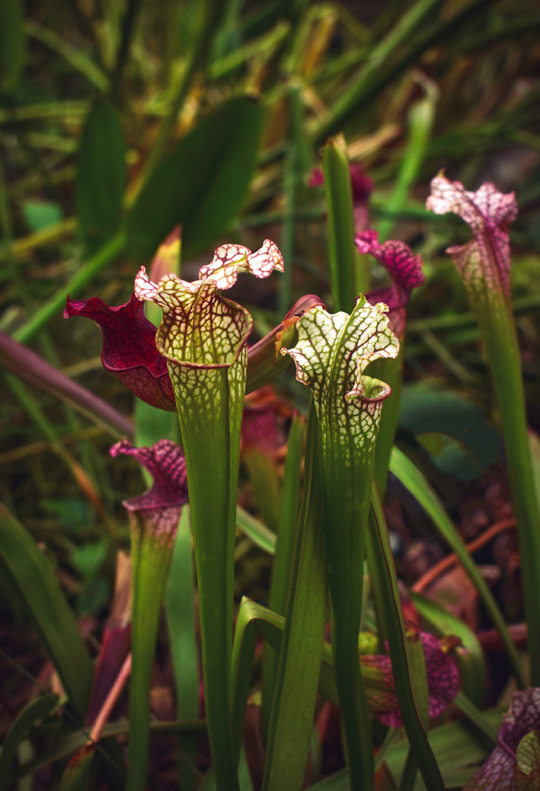
sarracenia leucophylla (hybrid).
#y’all know i love a good carnivorous leafboy#sarracenia#sarracenia leucophylla#pitcher plants#carnivorous plants#trumpet pitcher#cps#sarracenia hybrid#los plantalones#my photography
56 notes
·
View notes
Text


Part one
The genus Nepenthes (pitcher plants) is named for “Nepenthe” which literally means “without grief”. In Greek mythology (the odyssey) it is a potion that wipes away grief/sorrows by making you forget. Named by Carl Linnaeus, he wrote that even if it wasn’t the true greek Nepenthes, it would be for any botanist. He loved them so much and was convinced any botanist would love them too which is cute.
The pitchers are modified leaves and grow as closed bud and sterile until the top opens with the liquid ready to go, the leaf lid (operculum) keeps rainwater from diluting the liquid inside, which can have a pH as low as 2 and has other enzymes to help it dissolve stuff. (Wiki)
I know what your next burning question is: can you drink them?
Luckily other more unhinged botanists and enthusiasts have dedicated a page on their forum with a few describing it. There’s a nat geo article with the author in a picture drinking from one so there’s 1 survivor. One person said they drank (unopened so no bugs) N. ventricosa that tasted like water or wheat-grass. Some others mentioned neat scotch. On a linked thread someone mentioned just handling the plants and the liquid made their hands red and inflamed. I would say the species matters.
Mobile is bugging with links: cpukforum.com, ‘Drinking Nepenthes Pitcher Fluid’ thread
#poison ivy but she’s an actual botanist#poison Ivy comic#poison ivy#poison ivy dc#poison ivy fanart#nepenthes#botany#pamela isley#dc#art#fan art#artists on tumblr#illustration#character design#carnivorous plants#pitcher plants
228 notes
·
View notes
Text
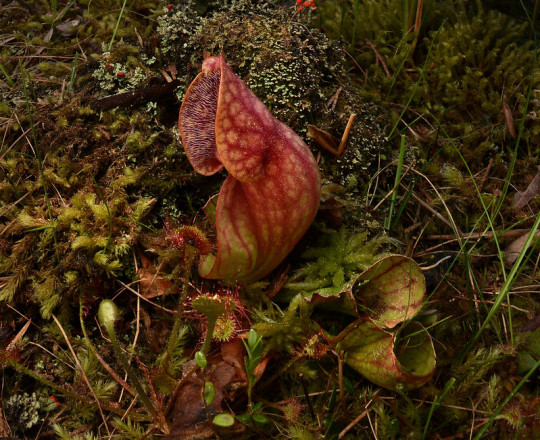
A purple pitcher plant (Sarracenia purpurea) in Suffolk County, New York, USA
by Alex Roukis
#purple pitcher plant#pitcher plants#carnivorous plants#botany#plants#plants: usa#Sarracenia purpurea#sarracenia#Sarraceniaceae
157 notes
·
View notes
Text
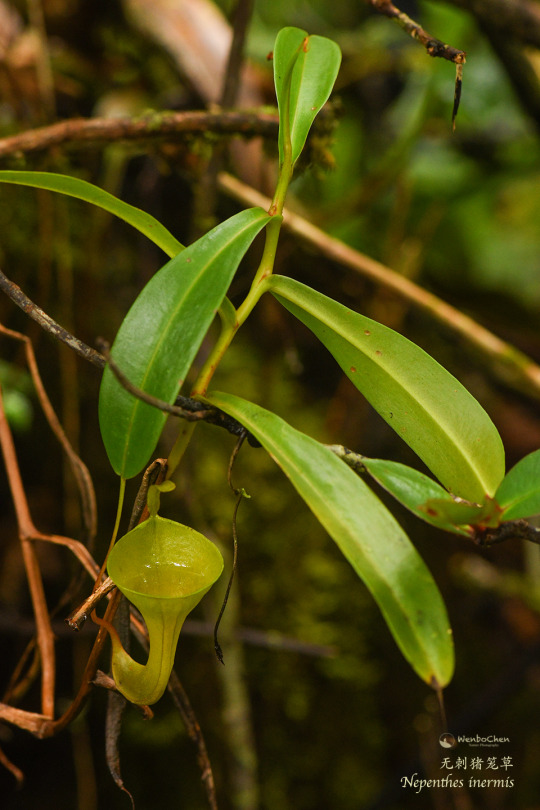
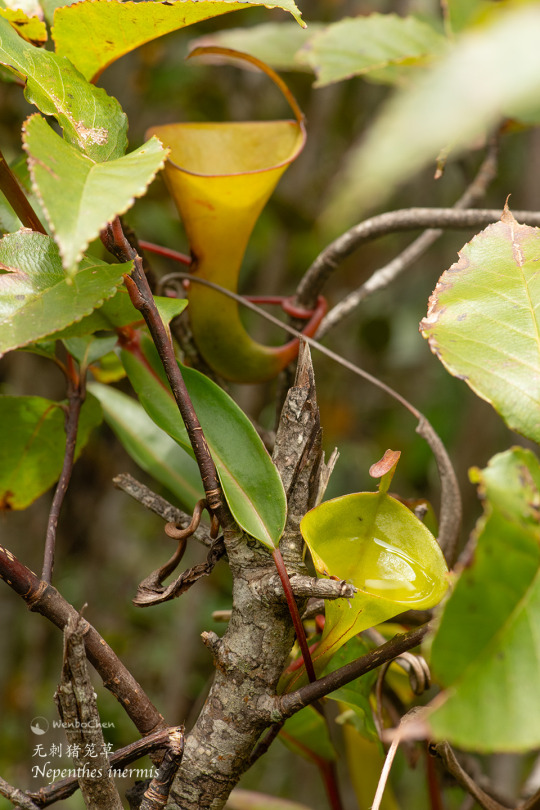

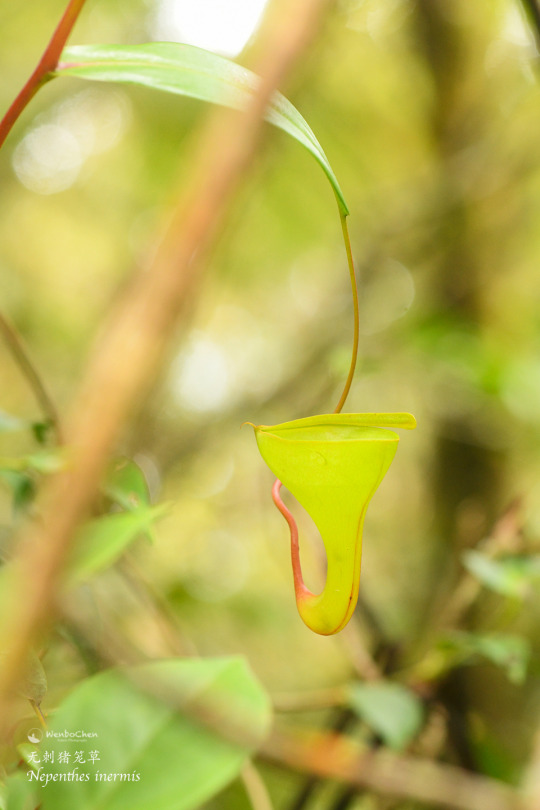

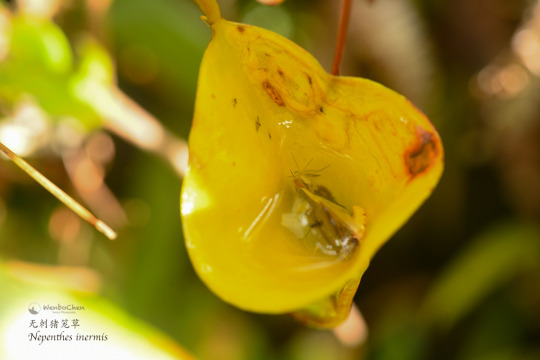



Nepenthes inermis/无刺猪笼草 is a pitcher plant endemic to the mountains of West Sumatra and Jambi (1500-2600m). The structure of the pitcher is unique in that it completely lacks a peristome (lip), and the lid is long and narrow. Plus, it produces incredibly thick mucilaginous pitcher liquid compared to other pitcher plants.
40 notes
·
View notes
Text

Sarracenia alata / Pale Pitcher Plant at the Sarah P. Duke Gardens at Duke University in Durham, NC
#Sarracenia alata#Sarracenia#Pale Pitcher Plant#Yellow trumpets#Pale trumpet#Pitcher Plant#Pitcher Plants#Native plants#Carnivorous Plants#Nature photography#photographers on tumblr#Sarah P. Duke Gardens#Duke Gardens#Duke University#Durham#Durham NC#North Carolina
78 notes
·
View notes
Text
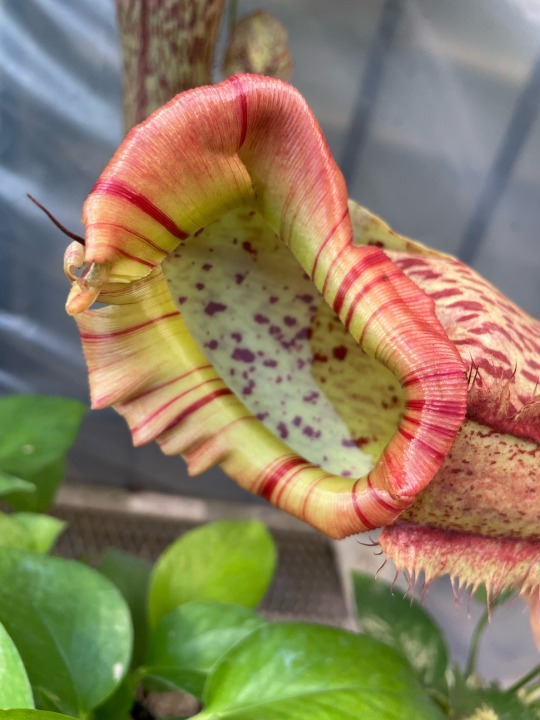

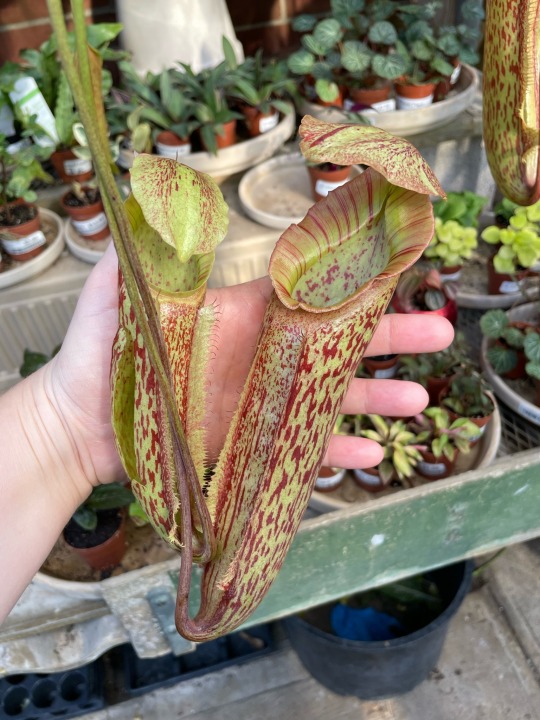
Look at these RIDICULOUS pitcher plants one of my local plant shops got in!! They’re huge, and the pitchers are gorgeous!
200 notes
·
View notes
Text
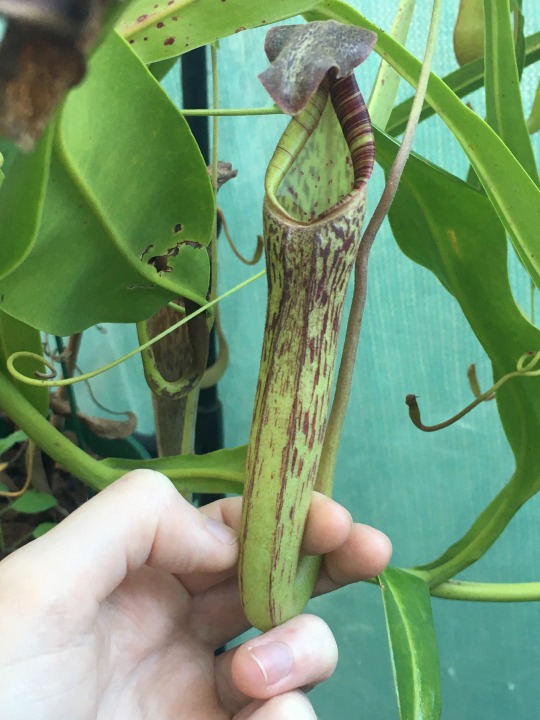

nepenthes bosciana x fusca
#carnivorous plants#carnivourousplant#plantblr#carnivorous plant#carnivorousplants#gardening#my plants#pitcher plant#nepenthes#clovers carnivores#plant photography#pitcher plants
69 notes
·
View notes
Text
Carnivorous Plants: (hanging out, making oxygen, eating bugs and sometimes very small animals, generally just being chill)
Every Horror-Obsessed Story Writer: Okay but what if they were HUGE, VORACIOUS, CUNNING MANEATERS???
Carnivorous Plants: Bro I am literally just sitting here.
#Carnivorous plants#I just feel they are a bit overly maligned#Dudes are just vibing in jungles and stuff#Eating bugs#they arent even that fast they are just sticky and bugs are dumb#Yes they make cool movie monsters but like#Theyre really just kinda little and very pretty and not out to Get Us#Humor#sundews#pitcher plants#venus fly trap#there are others but I am not a plant expert#i just thought this was a mildly funny observation XD
27 notes
·
View notes
Photo

A rebours - J.-K. Huysmans, Auguste Lepère, ill. - 1903 - via Gallica
262 notes
·
View notes
Text

two 1996 Malaysian stamps from a series on pitcher plants
[id: two postage stamps with realistic illustrations of two different kinds of pitcher plants. both kinds have green and orange coloration. the main visual difference between the two kinds is shape; the left is more slender while the right is more round. end id]
646 notes
·
View notes